First, Second, and Third Person

Related:
Related:



